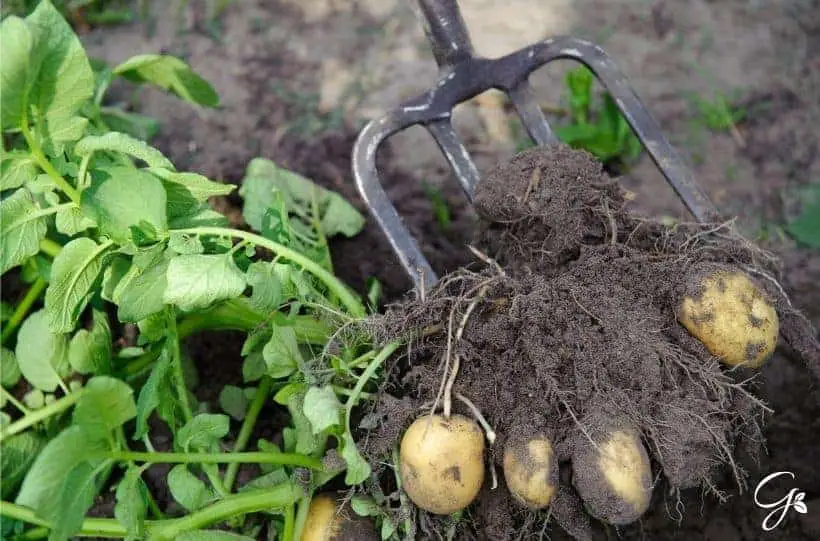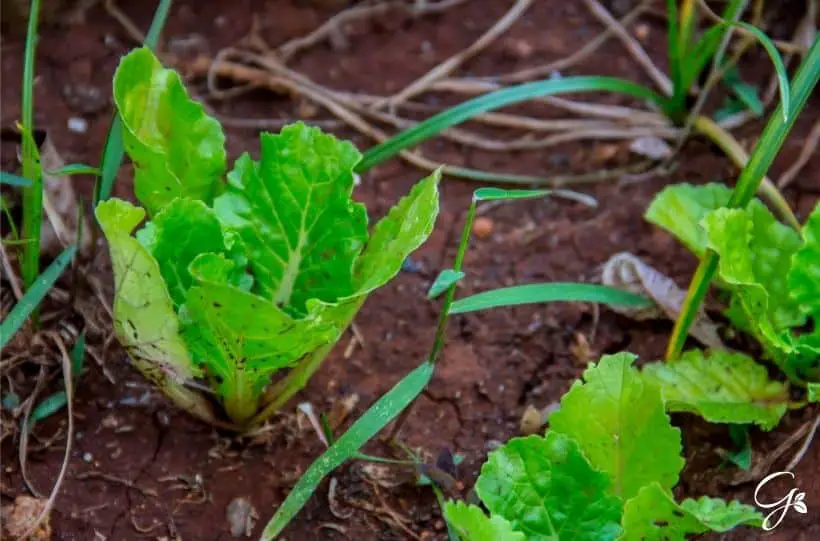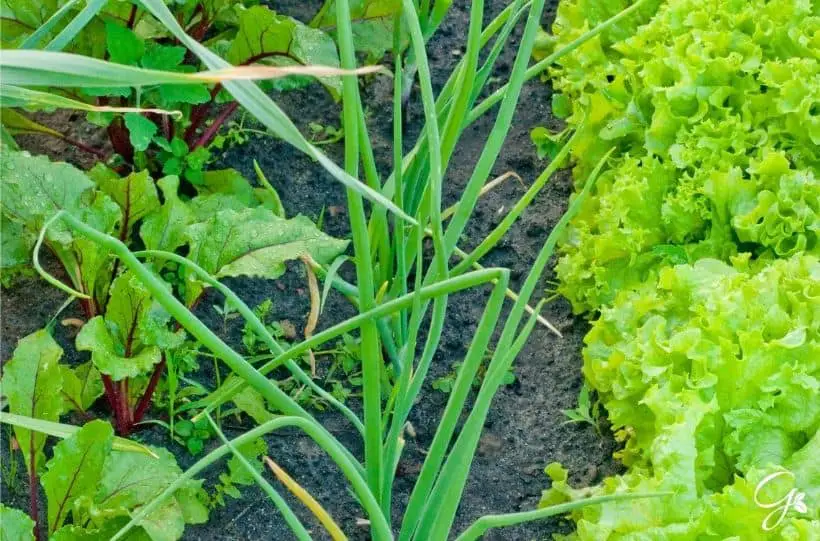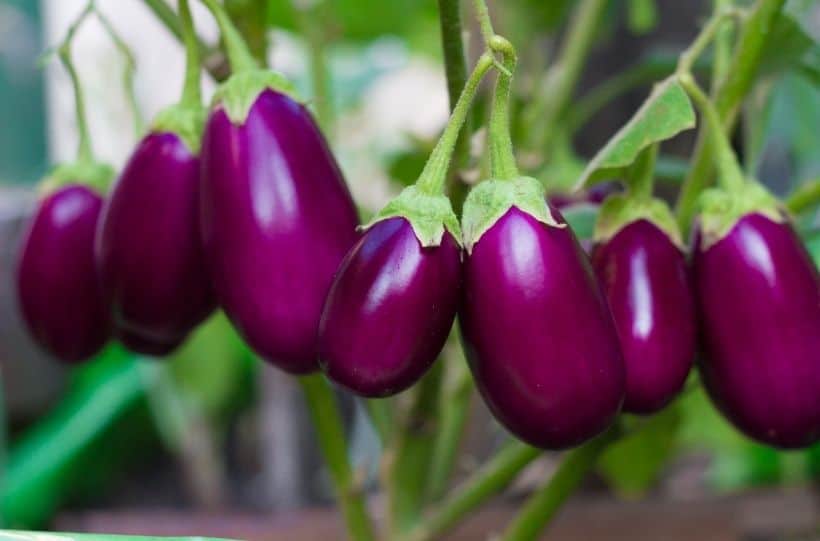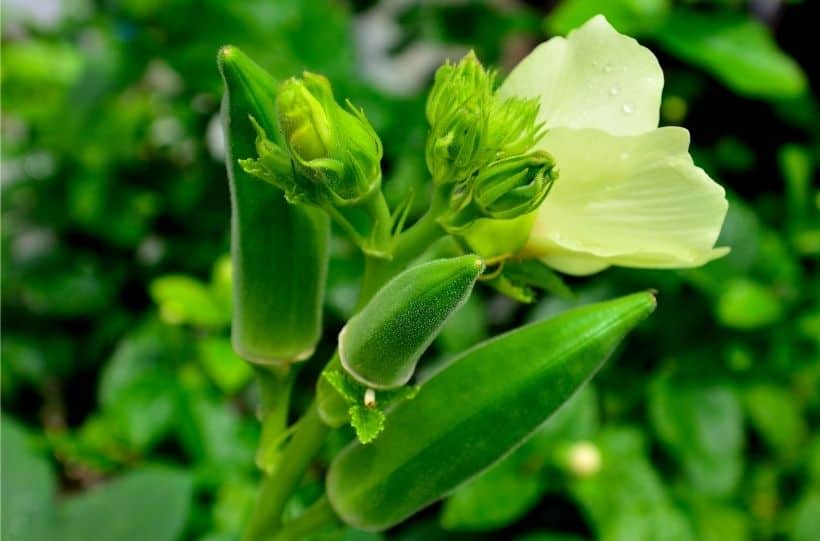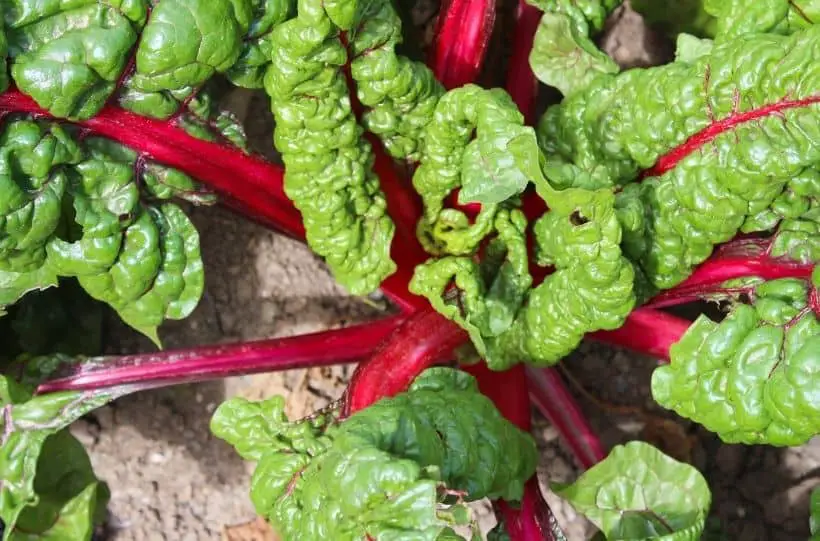Ultimate Guide to Companion Planting in Your Vegetable Garden
This post may contain affiliate links. Please see the privacy policy for details.
Companion planting is a popular method for gardeners to make the most of their limited gardening space. By planting things that work well together you help your garden grow more efficiently and increase the yield of your garden greatly.
Companion planting is a simple process to learn and can have many great benefits, including deterring pests, providing shade, attracting bees & butterflies, improving soil, and regulating weeds.
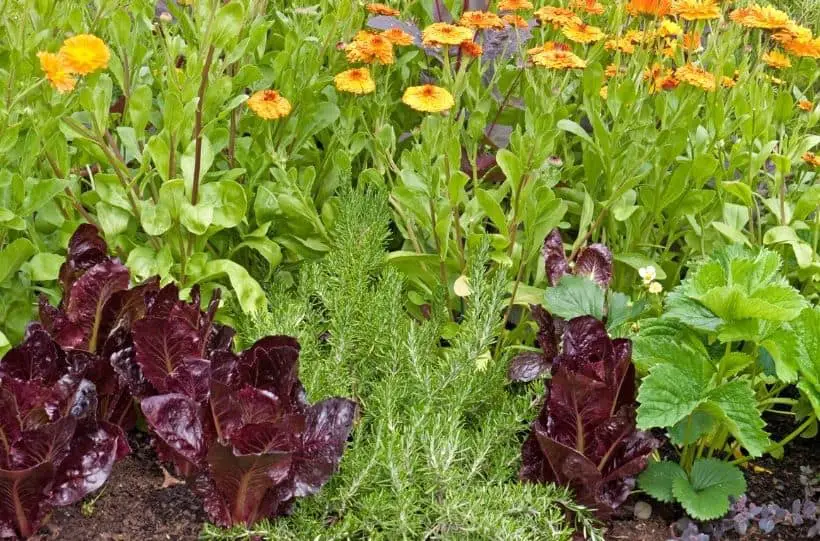
What is Companion Planting?
Companion planting is the practice of planting compatible plants together so that one crop can benefit from the other.
Companion planting is not a new concept and has been around for centuries. Some native American tribes are famous for their companion planning technique thought through the story of the three sisters.
You can use companion planting in your garden today to help get the most for your space and the best crops possible.
To understand companion planting you have to appreciate that each crop has different needs. As a savvy gardener, understanding these needs and taking advantage of companion planting to deliver them to the plants for maximum yield is part of good gardening practices.
And, for gardeners with limited space, this can be a great trick for having the best gardens.
What are the Benefits of Companion Planting?
Companion planting is a great way to grow more food in less space and to help protect your crop from damage.
Traditional row gardening makes it easy for pests and diseases to spread from plant to plant. By planting like plants away from each other with other plants in between you reduce the risk of losing your entire crop.
When you put plants that grow well together in the same space you make it easier to get more food from your garden without having to expand your garden making this a great option for people that need to work a bit harder to fit everything they want or need to grow into a confined space.
To make the most of your garden you can use companion planting to encourage more plant growth, protect your garden from pests and attract pollinators, and the right planting combinations can help provide shelter or shade for more vulnerable plants. More of these benefits include;
Companion Planting Saves Space
You can save space in your garden by planting different types of crops with different physical dimensions and characteristics. You will be replicating a natural environment where all kinds of plants co-exist in a small piece of land.
For instance, you can plant chard and coastal star romaine lettuce in the same space. Chard will grow tall (at least 3 feet) while the lettuce will stay compact and closer to the earth. When you plant chard and lettuce in the same space, you will be maximizing the usage of space that would have otherwise been left empty.
It Provides a Natural Living Mulch
The soil is kept covered by using all the available garden space. This eliminates erosion from excessive rainfall. It also reduces instances of the soil drying out from excessive heat.
When the plants grow up and fill the space, they act as living mulch. The mulch will also stifle any weeds trying to establish themselves in the garden by blocking access to light.
Companion Planting Helps to Control Pests and Diseases
When you plant rows of a single type of crop (monoculture), you risk exposing the garden to pests and disease-carrying insects. These pests can attack your entire garden as one big group and lead to devastating effects. A mixed crop garden is less attractive to pests.
Companion planting helps to control pests in several ways;
- As deterrents – Some crops will be attractants to the pests. This keeps the companion crops free of pests. Nasturtium is a great companion plant for broad beans because blackflies will feast on the plant and ignore the beans.
- As repellents – Crops such as onions or garlic repel many forms of insects and pests. This keeps your other vegetables free and clear. Garlic has a strong, pungent smell that confuses the pests and masks the smell of the other companion crops. It is very effective in controlling aphids.
- As trap crops – Some crops are grown for the sole purpose of attracting predatory pests or insects. These plants are called trap crops. When these pests find these crops in the garden, they concentrate on feeding on them, leaving the other vegetables free to blossom.
Eggplants, for instance, attract hoverflies that feed on aphids that may attack lettuce. Borages attract pest-eating wasps and bees making the plant a great companion for tomatoes. Crimson clover attracts spiders that eat pests making it a great companion plant for broccoli.
Companion Planting Attracts Pollinators
By using a mix of annuals, perennials, and biennials, you will have plants blooming in your garden throughout the year. Besides the aesthetic benefit, this presents, most of these plants and flowers will attract bees and other pollinators that will help propagate your vegetables.
A diverse inter-planted garden is more productive than a single-crop garden. Each crop works in unison as a collective for the greater good.
Companion Planting Offers Shade and Support
One great way to take advantage of this benefit in your garden is to plant spinach with strawberries to help hide the berries from the birds to help protect your harvest.
Tall growing plants such as sunflowers offer support for plants such as cucumbers and climbing beans. When you plant multiple crop combinations (squash, corn, and beans), the squash leaves help to smother weeds.
Beans and corn help to get rid of the squash vine borers. Bean vines use corn as support. The beans also fix nitrogen in the soil. Other companion crops that also provide vertical support to others include sunflowers, okra, roselle hibiscus, and tithonia.
Companion Planting Offers a Nutrient Boost and Improves Soil Health
Legumes such as beans and peas are great in fixing nitrogen in the soil. When you plant potatoes with beans the potato tubers grow bigger because of the nitrogen boost.
Borage also adds trace minerals to the soil which improves the flavor and growth of strawberries. In other cases, some plants may absorb certain harmful substances from the soil.
How to Companion Plant your Garden
To start companion planting in your garden, make a list of what you want to grow and do some basic research on the needs of each plant you are growing to find the right combinations to make the most of your garden space. Vegetables, flowers, perennials, herbs, and fruits can all be good companion plants.
Beneficial herbs to grow as companion crops;
- Basil
- Borage
- Thyme
- Cilantro
- Dill
- Fennel
- Lovage
- Parsley
Beneficial flowers to grow as companion crops (From seeds)
- Cosmos
- Zinnias
- Tansy
- Dandelion
- Marigold
- Alyssum
- Rudbeckia
- Scabiosa
- Sunflower
- Coreopsis
- Queen Anne’s Lace
- Tithonia
Each plant is different so starting with your garden list and going from there is the best way to plan and can help keep you busy over the winter while you wait for the weather to turn.
When you learn about how different types of crops grow, you can plant crops that will benefit from each other. You can plant your companion plants from seeds or add crops to an already established garden.
A few ways you can use companion planting to help your garden grow and thrive include putting plants that grow well together in close proximity, like placing green bean trellises behind your tomato plants on the north side and lining the edges of your garden beds with marigolds.
Another companion planting option that allows you the ability to increase the yield of your garden is to plant closer together using the square foot gardening method and placing compatible plants in squares next to each other. Allowing the plants to act as living mulch to prevent weeds reduces the amount of work needed to maintain your garden, and increases its yield.
How to Companion Plant to Encourage Growth
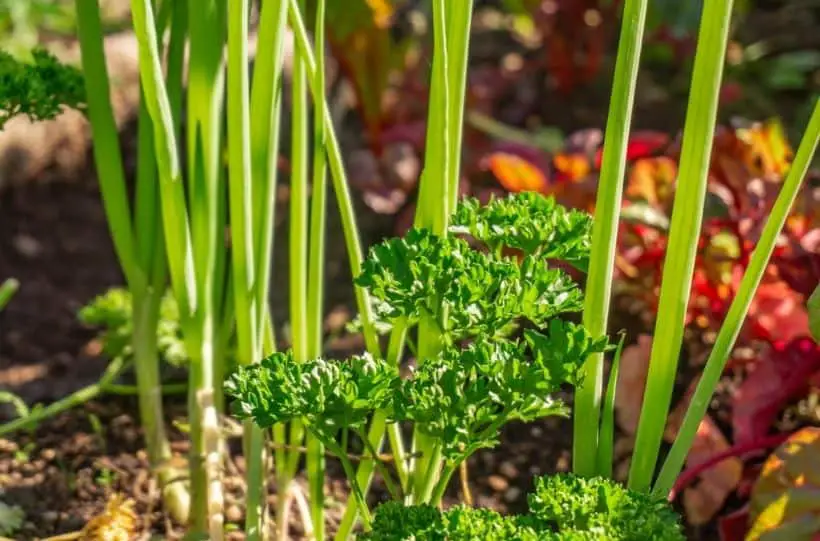
Companion planting some plants together is a great overall way to improve your garden and encourage growth and flavor.
Growing tomatoes and basil together is known to improve the flavor of tomatoes. And growing green beans with tomatoes is a great way to increase the yield of your tomatoes, and adding a border of marigolds is known to help pull up nutrition from the soil, attract pollinators, and help to repel unwanted insects from your garden. This combination can help get an amazing yield from a single garden bed.
A well-known companion planting combination called the three sisters is a companion planting trick that native Americans used to get the most from their gardens.
They would grow corn, beans, and squash together. The corn would grow tall and become a living trellis for the beans while the squash would grow along the bottom of the beds creating a living mulch to help reduce weeds. The entire process allows for all 3 crops to grow together in the same shared space for a larger yield.
How to Rotate Companion Planted Garden Beds
Many gardeners that decide to do companion planting wonder how they should rotate their garden beds each year. For the best results when companion planting, you should rotate your plants by the entire garden bed not just different plants within the garden bed.
This allows all of the plants in your garden beds to have fresh soil that doesn’t have nutrition difficulties or pests and diseases from the plants that were grown in the beds the year before.
If you are growing the same plant in more than one garden bed try to move your rotation in a way that would avoid the same plant being in the same bed as the last season if at all possible.
For larger gardens, a great way to help get this rotation is to grow a cover crop that will help improve the soil while still giving you a yield for your time and space. Lingams make a great cover crop.
If you have no choice but to rotate plants through the same garden bed due to poor planning be sure to add extra compost or topsoil to help replenish what your plants may need to help ensure you have a healthy thriving garden.
Common Companion Planting Combinations
There are thousands of possible combinations of companion planting. The chart below offers a glimpse into some of the most popular combinations.
| Crop | Best companions | Companions to avoid |
| Beans – as a legume, beans help to add nitrogen into the soil | Cabbages, carrots, corn, cucumber, marigold, cauliflower | Chives, onions, leeks, shallots, green onions |
| Asparagus | Sage, tomatoes, marigolds, basil, thyme, parsley, oregano, asters, peppers | Chives, onions, leeks, shallots, potatoes |
| Beets | Asparagus, sage, radishes, garlic, onion, broccoli, mint, cauliflower, lettuce, corn | Field mustard |
| Basil | Asparagus, peppers, tomatoes, eggplants, oregano | Sage |
| Broccoli | Rosemary, beets, celery | Oregano, eggplants, peppers, tomatoes, strawberries |
| Cucumber | Pea, celery, lettuce | Cauliflower, potatoes, basil |
| Eggplants | Beans, peppers, spinach, potatoes | Cauliflower, corn |
| Cabbage | Potatoes, chamomile, onion, sage, celery, rosemary, beets | Oregano, strawberries, peppers, eggplants, tomatoes |
| Cauliflower | Sage, chamomile, onion, rosemary, beets, dill, celery | Oregano, eggplants, peas, potatoes, peppers, tomatoes, strawberries |
| Onions | Broccoli, cauliflower, tomatoes, kale | Peas, beans |
| Peas | Corn, cucumber, beans, carrots | Garlic, chives, onions |
| Potatoes | Cabbage, peas, eggplants, corn | Sunflowers, zucchini, cucumber, pumpkin |
| Peppers | Parsley, basil, carrots, eggplants, tomatoes | Fennel |
| Lettuce | Radishes, beets, garlic, strawberries, carrots | Parsley, beans |
| Garlic | Cucumbers, lettuce | – |
| Strawberries | Thyme, peas, spinach, lettuce, garlic | Fennel |
| Tomatoes | Beans, asparagus, peppers, lettuce, chives, cucumbers, carrots, celery, basil, marigolds, mint, onion, parsley, borage, bee balm | Fennel, corn, dill, potatoes |
| Carrots | Eggplants, chives, peas, tomatoes, beans, onions | Dill, parsnip, chives |
The most famous companion planting combination of corn, pole beans, and squash or pumpkins is always a successful combination and a great option for making the most of your garden beds. This combination does very well on the north side of your garden without the risk of shading the rest of your garden.
Tomatoes or eggplants with lettuce and cold-weather greens. As your tomato plants grow tall and strong they will naturally provide shade for your lettuce and salad greens that are cold-weather plants and do not do well with the summer heat. This can help extend your growing season for these crops helping to make the most of your garden space.
Tomato and basil. These two make a classic combination in many Italian dishes. They naturally bring out the flavors of the other in everything from pasta sauce to fresh from the garden salads. When grown together these enhance the flavor of each other improving the flavor of your crop. The strong scent also helps keep predators away from your tomatoes.
Pole beans and potatoes make a great combination. Potatoes are heavy feeder plants that create a large number of vines along the ground. While pole beans are naturally nitrogen-fixing and will easily grow up a trellis where they will be out of the way of the potatoes. The roots of beans are shallow and will not get in the way of the potatoes’ deep root system.
In the case of cabbages, cauliflowers, and broccoli, avoid planting a lot of brassicas in one area.
Green onions have a shallow root system and do not mind having the tomatoes take up the largest section of the garden when they are planted together.
What Plants Should Not be Companion Planted?
From the chart above, you can see that not all companion planting works great. While companion planting is a great way to maximize space and improve the yield of your garden, some plants are not a good choice for companion planting with others.
Broccoli and cauliflower are very picky about spacing and will not grow well with most other plants, these are usually best grown with proper spacing in their own garden bed where they won’t struggle with other high-demand plants for nutrition or space.
To maximize your yields use the outer edges of your bed for planting flowers and herbs that will protect your broccoli and cauliflower.
Avoid planting highly fragrant or flavorful foods like strong herbs with less flavorful options that may pick up the scents and flavors from nearby plants or one that would not blend well if flavors were mixed like planting cucumbers with strongly scented herbs.
If saving seeds for future use you may want to avoid planting some plants near each other to avoid cross-pollination. This can be a common problem from planting cucumbers and watermelons too close to each other and ending up with a bland cross between the two.
Some plants are known to have allelopathic properties meaning they interact with some other plants stunting their overall growth. Cases like this include planting things like strawberries near cabbage plants or onions and garlic near bean plants.
Avoid planting two of the same type of heavy feeders together. The stronger plant most often ends up stunted while larger plants will thrive. Planting two heavy feeders that both enjoy a different type of nutrient such as one that thrives on potassium while another focuses on nitrogen can be beneficial in getting the most from your garden.
Fennel and black walnut plants release chemicals that prevent the growth of other plants around them.
Also, be cautious of the location when planting. Some plants do well in the full sunlight while others can tolerate some shade. When you understand your plants’ requirements for growth, you will be able to know the kind of companion plant that would be best suited for them.
Good or Bad Companions?
So now that you know how companion planting works and why it’s beneficial, how do you know what plant combinations work or not? Check out the in-depth companion planting guides for many common garden crops below:
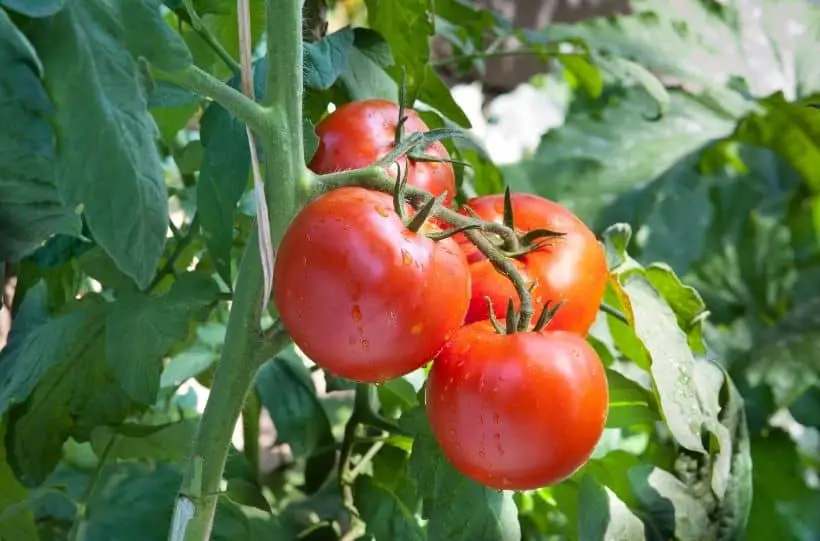
Best Companion Plants for Tomatoes in Your Vegetable Garden – Boost your tomato production without any extra work.
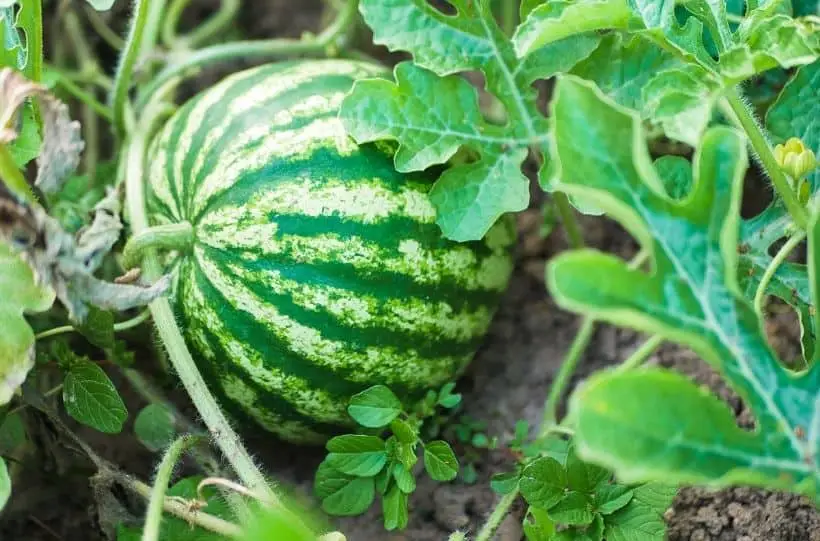
Best Companion Plants for Watermelons – Watermelons make amazing companion plants due to their ability to act as a living mulch for your taller plants.
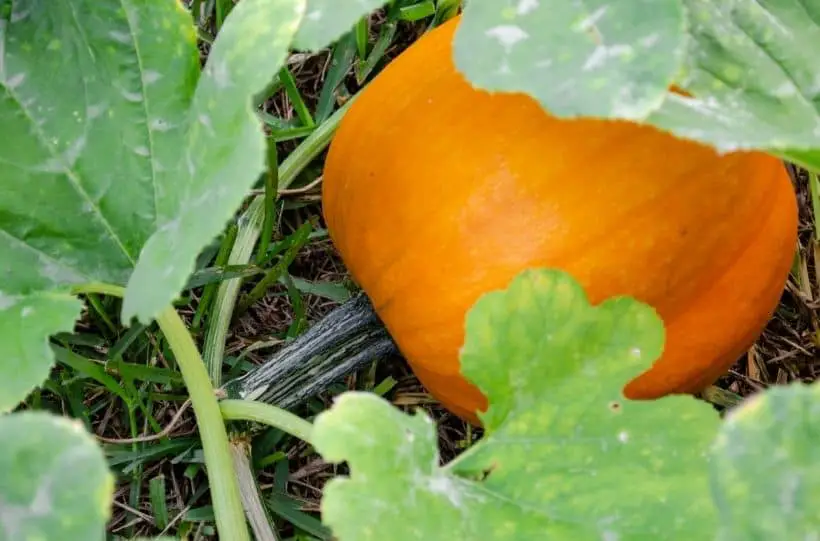
Best Companion Plants for Pumpkins – These companion plants for pumpkins offer support with nutrients, pest control, and attracting pollinators.
Best Companion Plants for Corn – These companion plants for corn help provide enough nutrients, deter pests, and achieve a successful harvest.
Best Companion Plants for Potatoes – Companion planting potatoes helps create biodiversity that helps your potatoes thrive better than on their own.
Best Companion Plants for Kale – Kale makes a great companion plant in the garden. It can help break up sections of plants together to help prevent the spread of diseases and pests.
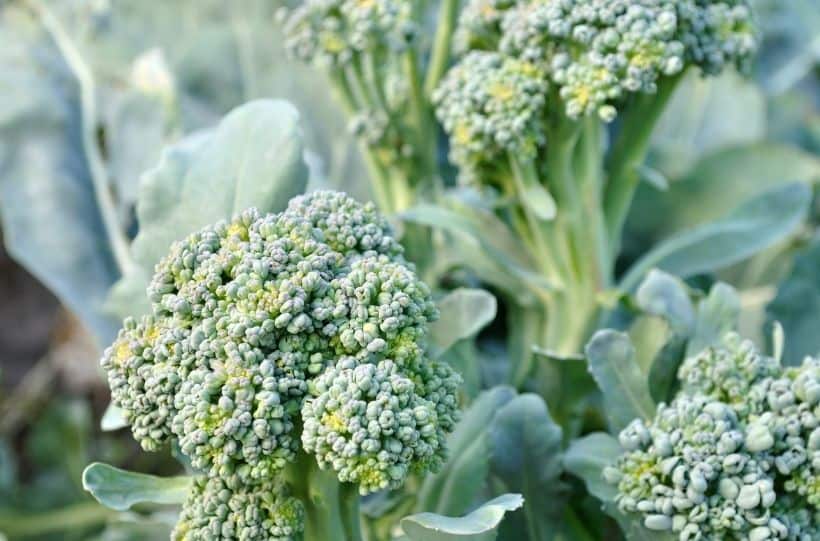
Best Companion Plants for Broccoli – Companion planting with broccoli is easier than it seems when you are willing to put some planning into your garden beds.
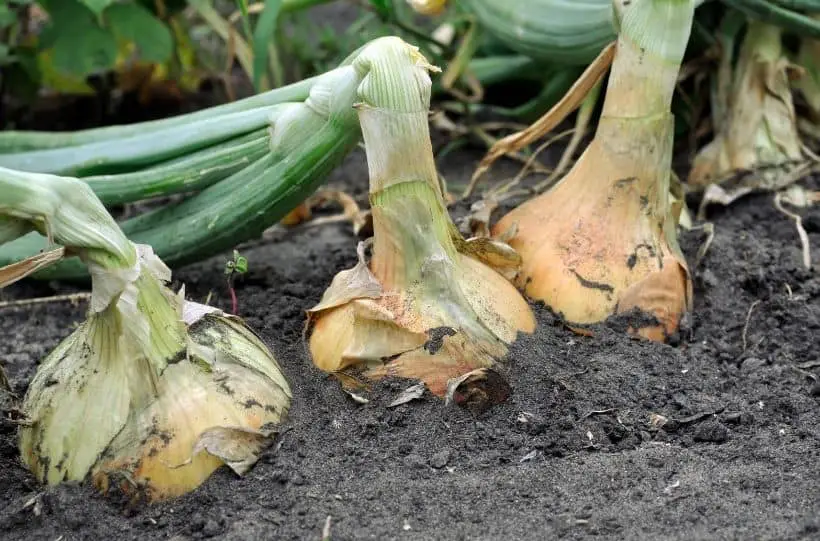
Best Companion Plants for Onions – Onions make a great companion plant for other plants because the strong scent of onions is a great way to repel unwanted insects and pests from your garden beds.
Best Companion Plants for Beets – Beets get along well with a wide variety of plants and can help diversify your garden helping to protect against pest damage, and slow the spread of disease.
Best Companion Plants for Eggplants – Companion planting eggplant is a great way to ensure that your plants have enough healthy soil and protection from pests.
Best Companion Plants for Okra – Okra is a great vegetable for planting in your companion garden because it gets along with most other plants and can even be used to help other plants in your garden grow.
Best Companion Plants for Swiss Chard – Companion plant your swiss chard to offer additional nutrients and reduce the number of pests attacking your crop for a successful harvest.


